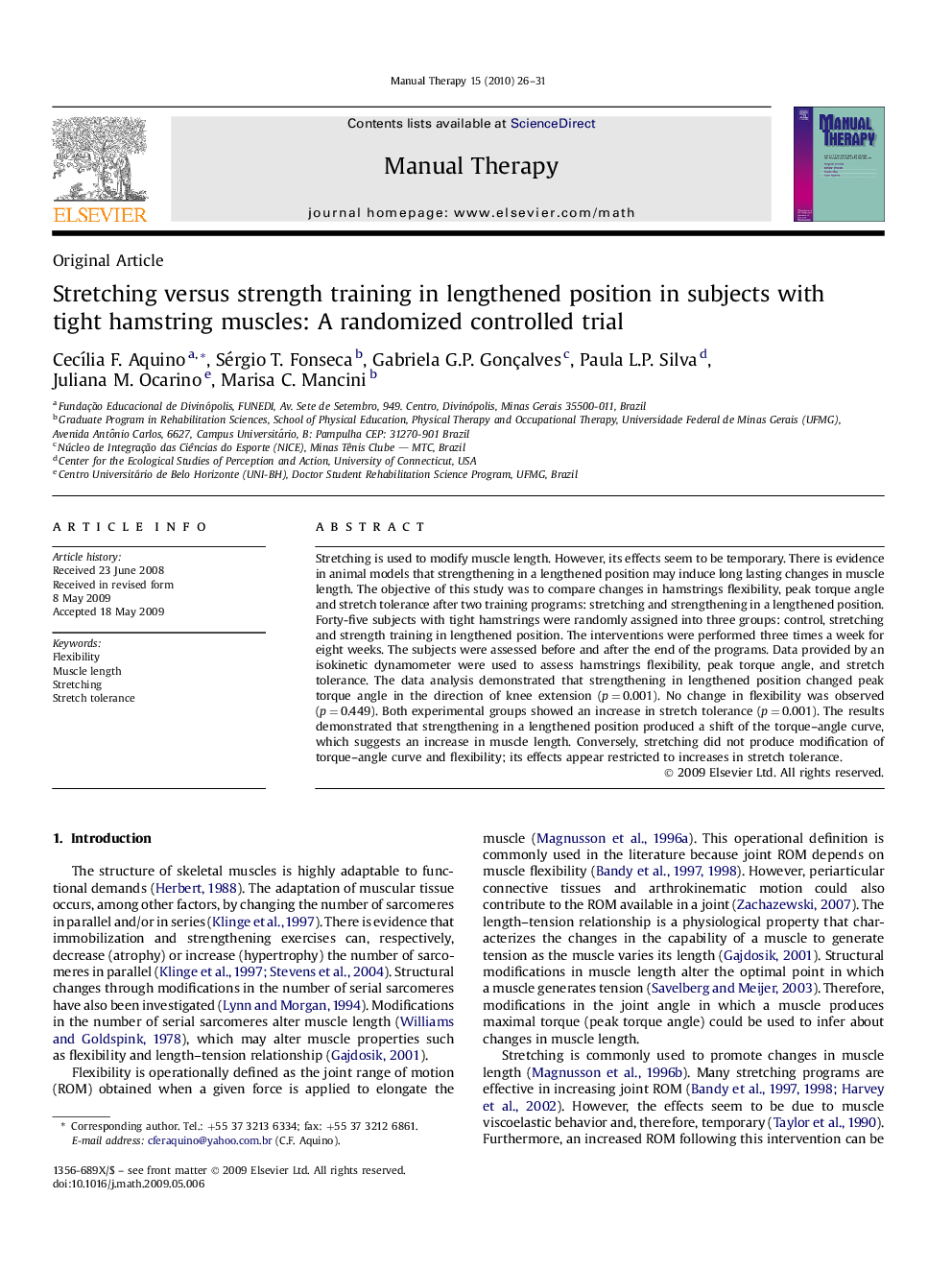| Article ID | Journal | Published Year | Pages | File Type |
|---|---|---|---|---|
| 2625814 | Manual Therapy | 2010 | 6 Pages |
Stretching is used to modify muscle length. However, its effects seem to be temporary. There is evidence in animal models that strengthening in a lengthened position may induce long lasting changes in muscle length. The objective of this study was to compare changes in hamstrings flexibility, peak torque angle and stretch tolerance after two training programs: stretching and strengthening in a lengthened position. Forty-five subjects with tight hamstrings were randomly assigned into three groups: control, stretching and strength training in lengthened position. The interventions were performed three times a week for eight weeks. The subjects were assessed before and after the end of the programs. Data provided by an isokinetic dynamometer were used to assess hamstrings flexibility, peak torque angle, and stretch tolerance. The data analysis demonstrated that strengthening in lengthened position changed peak torque angle in the direction of knee extension (p = 0.001). No change in flexibility was observed (p = 0.449). Both experimental groups showed an increase in stretch tolerance (p = 0.001). The results demonstrated that strengthening in a lengthened position produced a shift of the torque–angle curve, which suggests an increase in muscle length. Conversely, stretching did not produce modification of torque–angle curve and flexibility; its effects appear restricted to increases in stretch tolerance.
